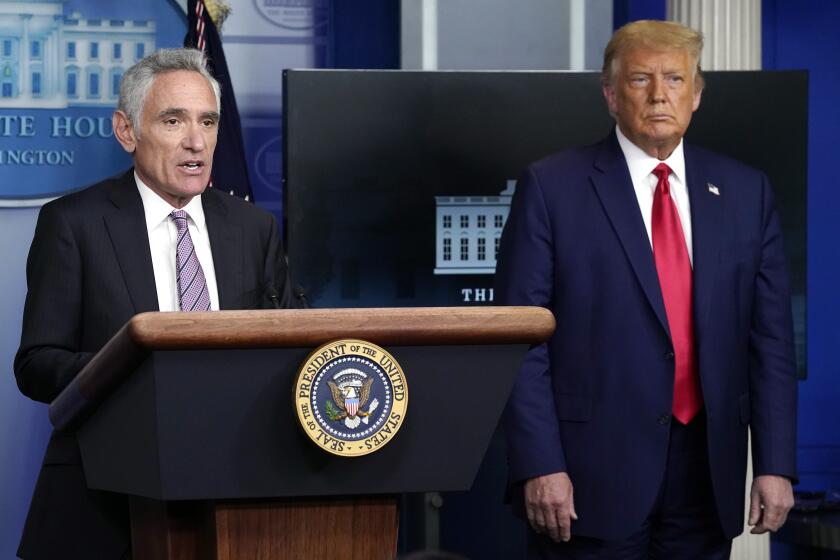Targeting the Social Drinker Is Just MADD
The percentage of traffic fatalities caused by drunk drivers has dropped more than 40% since 1982, and the number of people killed by drunk drivers has leveled off at 16,000 a year. During that period, anti-alcohol advocacy has become something of a niche nonprofit industry. Now, instead of focusing on rounding up real threats to highway safety -- the hard drinkers -- groups like Mothers Against Drunk Driving have decided to wage war on social drinkers.
In fairness, MADD deserves credit for raising awareness of the dangers of driving while intoxicated. It was almost certainly MADD’s dogged efforts to spark public debate that effected the drop in fatalities since 1980, when Candy Lightner founded the group after her daughter was killed by a drunk driver.
But MADD is at heart a bureaucracy, a big one. It boasts an annual budget of $45 million, $12 million of which pays for salaries, pensions and benefits. Bureaucracies don’t change easily, even when the problems they were created to address change.
In its eight-point plan to “jump-start the stalled war on drunk driving,” MADD advocates the use of highly publicized but random roadblocks to find drivers who have been drinking. Even setting aside the civil liberties implications, these checkpoints do little to get dangerous drunks off the road. Rather, they instill fear in people who have a glass of wine with dinner, a beer at a ballgame or a toast at a retirement party.
In most jurisdictions, even a slight amount of alcohol detected in a Breathalyzer test at such checkpoints can be grounds for arrest for driving under the influence -- a less serious charge than driving while intoxicated but one that still carries social stigma and other consequences.
One point in MADD’s plan advocates raising excise taxes on beer. Interestingly, MADD refrains from calling for an added tax on distilled spirits, an industry that the organization has partnered with on various drunk driving awareness projects. And MADD has made no secret of its desire to lower the legal blood- alcohol level from the current .08 in most places to .06, .04 or even to zero. This despite studies showing that most alcohol-caused traffic fatalities involved drivers with a level of 0.14 or higher.
The National Highway Transportation Safety Administration asserts that fatality rates don’t rise appreciably until a driver hits 0.10. Still, MADD champions a threshold of .08 or lower, a standard under which a 120-pound person who had two glasses of wine in two hours would be seen as drunk.
In fact, there is little in MADD’s plan that would improve traffic safety. A British study found that cell phone use while driving caused significantly more impairment than a .08 blood-alcohol level. And a 2001 American Automobile Assn. study found that eating, fumbling with a car stereo or CD player or disciplining children while driving are even more dangerous than cell phone use.
“Defining down” what constitutes drunk driving serves MADD by exaggerating just how many drunk people get behind the wheel. Inflated drunk driving statistics confirm MADD’s relevance and help it raise money. Whether these new “drunks” actually are dangerous is beside the point.
Just last month, MADD issued a highly publicized grade of C for U.S. efforts to curb drunk driving. It cited increases in “alcohol-related traffic deaths” as its explanation for the low grade. The language that MADD used is important. “Alcohol-related” statistics include every accident in which someone involved had something to drink. That includes, for example, accidents in which a sober driver runs a red light and strikes a driver who had two beers and those in which a drunk stumbles out of a bar and into the path of a bus.
MADD regularly overlooks highway safety measures unrelated to alcohol when it is politically convenient. General Motors, for example, promised to give MADD $2.5 million over five years. Is it a coincidence that MADD is silent when GM glorifies speed in its marketing campaigns?
According to the Center for Consumer Freedom, an advocacy group for restaurants and taverns, even Lightner has reservations about MADD’s new focus. “I worry that the movement I helped found has lost direction,” the center’s Web site quotes Lightner as saying. “If we really want to save lives, let’s go after the most dangerous drivers on the road.” Speeders, for instance, or cell phone users, or those who drink themselves into near comas. But rather than focus on the real problems now, MADD has chosen to play Chicken Little, to manipulate data and to advocate public policies that come close to neo-Prohibition.
More to Read
Inside the business of entertainment
The Wide Shot brings you news, analysis and insights on everything from streaming wars to production — and what it all means for the future.
You may occasionally receive promotional content from the Los Angeles Times.










